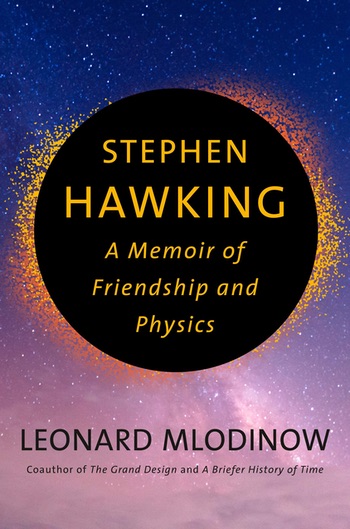Review: Stephen Hawking: A Memoir of Friendship and Physicsby Jeff Foust
|
| “In life as in his physics,” Mlodinow wrote of Hawking, “he liked to take chances.” |
Mlodinow writes that he “dismissed out of hand” the idea of writing a biography of Hawking, given that Hawking was the subject of so many other works, including an autobiography (see “Review: My Brief History”, The Space Review, September 23, 2013). But the idea of a memoir focused on his professional and personal relationship with Hawking appealed to Mlodinow, who had collaborated with Hawking on books such as The Grand Design about cosmology (see “Review: The Grand Design”, The Space Review, October 18, 2010).
Mlodinow’s book combines three separate threads. One is a biography of Hawking, based on interviews with friends and family as well as other published works about his life. A second theme is explaining Hawking’s research in cosmology. The third, and most interesting, theme is Mlodinow recounting his time spent with Hawking, particularly as they worked on The Grand Design. Mlodinow traveled to Cambridge for extended periods to work with Hawking on the book, getting to know closely Hawking and his caregivers.
Mlodinow effectively takes the reader behind the scenes of Hawking’s public persona, from working with him in his office at Cambridge to dinners at his home and even punting—a boat trip—on the river Cam (Mlodinow said he was alarmed that such a trip would be dangerous for Hawking, but later concluded that danger was an allure for him: “In life as in his physics, he liked to take chances.”) We see Hawking as a more complete human being, not just a great mind who persevered for decades in the face of a crippling disease.
Mlodinow also puts Hawking’s contributions to science in perspective. Hawking’s fame, thanks to his book A Brief History of Time, led many people to consider him “one of the greatest minds since Plato,” but some physicists played down his contributions. Mlodinow acknowledges that Hawking, on his frequent visits to Caltech early in his career, “would have come in at just number three among the physicists on the fourth floor of the Lauritsen Laboratory” there, behind Nobel laureates Murray Gell-Mann and Richard Feynman. However, he argues that Hawking’s work helped revitalize the study of general relativity and gravitation, which was something of an intellectual backwater when Hawking was a student in the 1960s.
Mlodinow also argues that fame Hawking accrued with the publication of A Brief History of Time was literally essential to his survival, given the cost of the caregivers and services he needed to live with ALS far exceeded his modest academic income. “For Stephen,” he writes, “money brought life.” And, as Mlodinow’s book makes clear, what a life it was.
Note: we are temporarily moderating all comments submitted to deal with a surge in spam.
